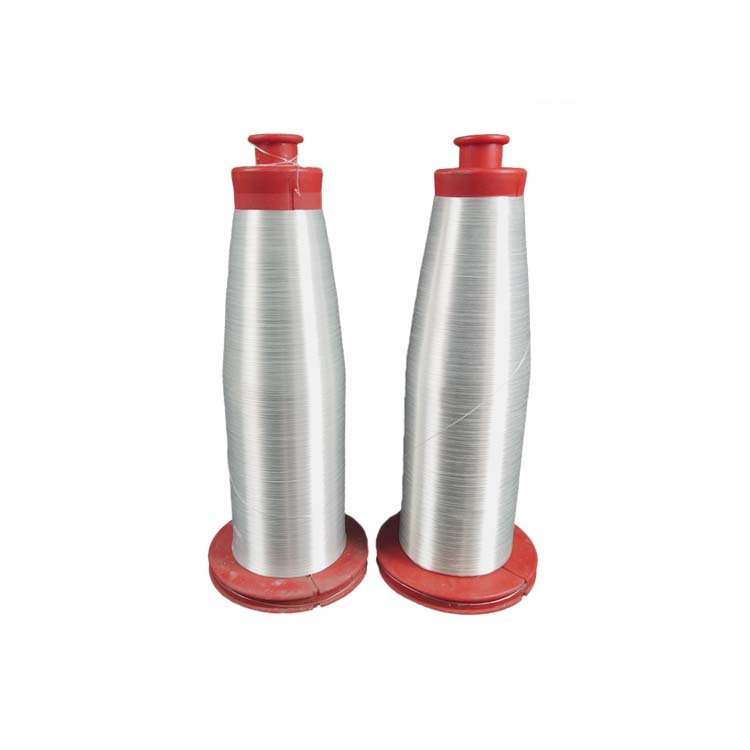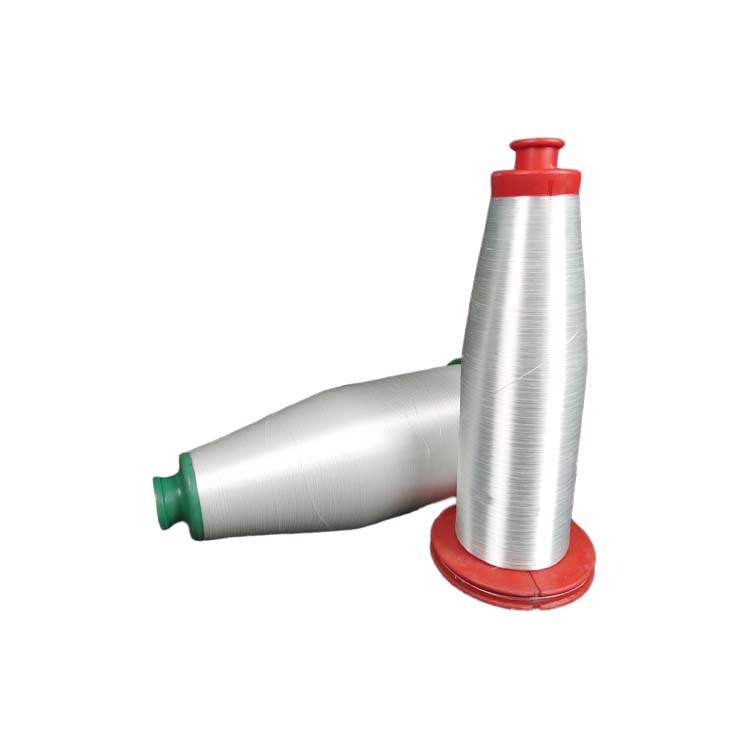
Introduce
Fiberglass yarn, a versatile material, is widely used in various industries because of its excellent properties and applications. As a leading B2B manufacturing company specializing in fiberglass yarns, Aiswix has been at the forefront of the industry for over two decades. In this article, we take an in-depth look at the complexities of fiberglass yarns, their manufacturing processes, performance characteristics, advantages over other materials, key application areas, and future market trends.
What is fiberglass yarn? What material is it made of?
Fiberglass yarn is a yarn composed of glass fibers, which are extremely fine glass filaments. These fibers are typically made through an extrusion process in which raw materials such as silica sand, limestone and other additives are melted in a high-temperature furnace.
The composition of glass fiber yarn is mainly composed of silica (SiO2), which is the main component of glass. One of the defining characteristics of fiberglass yarn is its exceptional tensile strength, which refers to its ability to withstand stretching or pulling forces without breaking.
In addition to strength, glass fiber yarn has a range of other desirable properties that contribute to its widespread use in various industries. For example, fiberglass filament yarn has high heat resistance, making it suitable for applications exposed to high temperatures, such as insulation for automotive engines or industrial furnaces. Additionally, fiberglass filament yarn is inert and non-reactive to most chemicals, making it ideal for use in corrosive environments where traditional materials may degrade over time.
What is the manufacturing process of fiberglass yarn?
Step 1: Raw Material Preparation
The manufacturing process of fiberglass yarn begins with the careful selection and preparation of raw materials. The main ingredients include silica sand, limestone and various additives such as boron, aluminum, calcium and magnesium. These raw materials are carefully measured and mixed to form a homogeneous mixture that becomes the basis of the glass composition.
Step 2: Melting Process
Once the raw materials are ready, they are fed into the furnace where they are subjected to intense heat, causing them to melt and transform into a molten liquid. This molten glass is crucial to subsequent steps in the manufacturing process, as it is the raw material for producing glass strands.
Step 3: Filament Formation
The molten glass is then fed through a series of tiny openings called spinnerets. These spinnerets are carefully arranged in specific patterns to control the size and shape of the filaments produced. As molten glass emerges from the spinneret, it cools rapidly and solidifies into a continuous stream of thin glass strands.
Step 4: Twist or Group
After the glass strands are formed, they are gathered and undergo a twisting or grouping process to form yarns of varying thicknesses and textures. This twisting or grouping process helps to increase the cohesion and strength of texturized fiberglass yarn, making it stronger and suitable for handling and further processing.
Step 5: Additional Processing
After fiberglass yarn is formed, it can be subjected to additional treatments to improve its properties or enhance its capabilities for specific applications. For example, yarn can be coated with sizing agents to improve its handling properties and compatibility with other materials.
Step 6: Packaging and Quality Control
Finally, the finished fiberglass yarn is wound onto spools or spools for storage and shipping to customers. Throughout the manufacturing process, strict quality control measures are implemented to ensure that fiberglass yarns meet specifications and standards for strength, durability and consistency.
In summary, the manufacturing process of fiberglass wire yarn involves several complex steps, including raw material preparation, melting, filament formation, twisting or marshalling, additional processing, packaging, and quality control. Each step plays a vital role in determining the characteristics and performance of the final fiberglass yarn, making it a versatile and reliable material suitable for a wide range of industrial applications.
What are the advantages of fiberglass yarn
compared to other materials?
Fiberglass yarn offers numerous advantages over other materials, making it the first choice for a variety of applications across industries. Some of the main advantages of glass yarns include:
One of the main advantages of glass yarns is their exceptional strength and durability. Fiberglass has high tensile strength, allowing fiberglass filament yarn to withstand heavy loads and harsh environmental conditions without deforming or breaking. This makes fiberglass yarn ideal for applications requiring strong and durable materials.
Despite its impressive strength, glass fiber yarn is lightweight compared to many other materials with similar strength properties. This lightweight property makes fiberglass yarn 136tex particularly advantageous for applications where weight reduction is necessary, such as in the aerospace, automotive and shipbuilding industries. It produces lightweight yet durable components that help improve fuel efficiency and improve performance.
Fiberglass yarn exhibits excellent resistance to a variety of chemicals, including acids, alkalis, solvents, and corrosive substances. This chemical resistance makes fiberglass wire yarn suitable for use in environments where there is frequent contact with corrosive chemicals.
Another significant advantage of fiberglass yarn is its excellent thermal insulation properties. Glass fibers have low thermal conductivity, which means they effectively block the transfer of heat. This insulating ability makes glass yarns suitable for applications requiring thermal protection, such as the insulation of pipes, boilers, furnaces and ovens. It helps save energy, maintain temperature stability and prevent heat loss or gain.
Glass fiber yarn is non-conductive and has excellent electrical insulation properties, making it the material of choice for electrical and electronic applications. It is often used for the insulation of wires, cables, circuit boards, and electrical components to prevent leakage and ensure safe operation.
Fiberglass is inherently non-flammable, making Fiberglass Twisted Yarn highly fire and heat resistant. Unlike many organic materials, fiberglass filament yarn will not ignite or contribute to the spread of flames. This fire resistance makes fiberglass yarn suitable for applications that require compliance with strict fire safety regulations, such as construction, automotive components and protective clothing.
Glass yarns maintain their shape and size even under changing temperature and humidity conditions. It exhibits minimal expansion or contraction, ensuring dimensional stability over time. This property is critical for applications where precise dimensions and tolerances are critical, such as composite manufacturing, precision engineering and structural applications.
Overall, glass yarns offer a unique combination of strength, durability, lightweight, chemical resistance, thermal insulation, electrical insulation, fire resistance, and dimensional stability, making them a versatile and reliable material suitable for a variety of industrial applications . Its inherent properties contribute to improved performance, service life and cost-effectiveness compared to other materials.
What are the main application areas of glass fiber yarn?
Cloth for electronic industry: expanded yarn fiberglass can be made into fine glass cloth, which is used in printed circuit boards (PCB), electronic component packaging, etc. in the electronic industry. It has excellent mechanical strength and heat resistance.
Electrical insulation materials: expanded yarn fiberglass is often used to make electrical insulation materials, such as cable insulation layers, electrical insulation tapes, etc. It has good insulation properties and heat resistance, and can protect electrical equipment from the external environment.
Braided rope core casing: fiberglass filament yarn can be made into rope core casing, which is used to strengthen various types of ropes, rigging, cables, etc. It has the characteristics of wear resistance, corrosion resistance and high temperature resistance, and is suitable for marine, Aerospace and other fields
Construction field: used to reinforce concrete structures and manufacture fiberglass reinforced cement products, such as fiberglass reinforced mortar and plates.
Automobile manufacturing: fiber glass yarns are used in the manufacture of automobile shells, body parts, wheel covers, etc. to improve the strength and durability of the automobile.
Fiberglass filament yarn has important applications in various industrial fields, and its excellent properties make it one of the ideal materials in many fields.
What is the future development trend of fiberglass yarn?
The future development trend of glass fiber yarn is the advancement of manufacturing technology, innovation in product design and the expansion of new application fields. Several major trends are shaping the future of fiberglass yarn:
Sustainable Manufacturing
With an increasing focus on sustainability and environmental stewardship, the fiberglass industry is turning to more sustainable manufacturing practices to meet growing demand while minimizing environmental impact.
Lightweight And High-performance Applications
As manufacturers seek to improve fuel efficiency, reduce emissions and improve performance, demand for high-strength, lightweight materials such as expanded yarn fiberglass will continue to grow. Innovations in composite design and manufacturing will help develop advanced fiberglass composites for structural applications in light vehicles, aircraft and infrastructure.
Advanced Composite Materials
The use of fiberglass yarn in advanced composites is expected to expand, driven by advances in resin formulations, fiber structures and manufacturing processes. Future developments may include incorporating nanomaterials, hybrid reinforcements and smart features into fiberglass composites to improve their mechanical properties, durability and functionality.
Customized And Solutions
As the demand for professional applications grows, glass fiber yarn manufacturers will provide customized and customized solutions to meet specific customer requirements. This could include developing specialty yarns with unique properties, such as high temperature resistance, conductive coatings or bio-based formulations. Partnerships between manufacturers, designers and end-users will drive innovation and facilitate the rapid development of customized fiberglass solutions for different applications.
As the fiberglass industry continues to develop, fiberglass yarn will play a key role in promoting technological progress, driving innovation and meeting the changing needs of various industries around the world.
In Conclusion
Fiberglass yarn is a versatile material with superior performance characteristics and a wide range of applications. As the leading manufacturer of fiberglass yarn, Aiswix remains committed to providing high-quality products and excellent customer service to meet the evolving needs of our clients. With its exceptional properties and promising market outlook, fiberglass yarn continues to play a pivotal role in shaping various industries and driving innovation worldwide.





